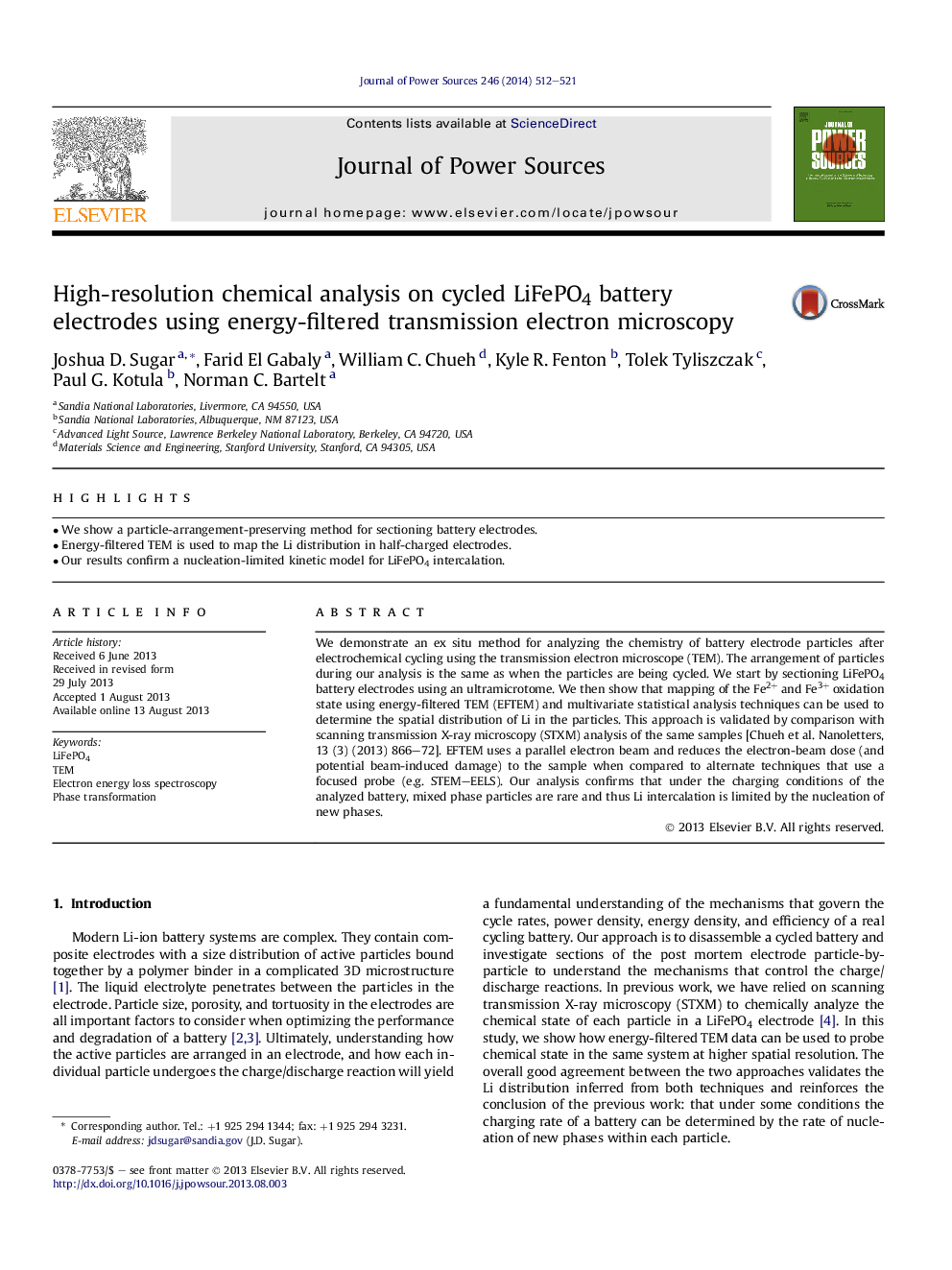| Article ID | Journal | Published Year | Pages | File Type |
|---|---|---|---|---|
| 1284309 | Journal of Power Sources | 2014 | 10 Pages |
•We show a particle-arrangement-preserving method for sectioning battery electrodes.•Energy-filtered TEM is used to map the Li distribution in half-charged electrodes.•Our results confirm a nucleation-limited kinetic model for LiFePO4 intercalation.
We demonstrate an ex situ method for analyzing the chemistry of battery electrode particles after electrochemical cycling using the transmission electron microscope (TEM). The arrangement of particles during our analysis is the same as when the particles are being cycled. We start by sectioning LiFePO4 battery electrodes using an ultramicrotome. We then show that mapping of the Fe2+ and Fe3+ oxidation state using energy-filtered TEM (EFTEM) and multivariate statistical analysis techniques can be used to determine the spatial distribution of Li in the particles. This approach is validated by comparison with scanning transmission X-ray microscopy (STXM) analysis of the same samples [Chueh et al. Nanoletters, 13 (3) (2013) 866–72]. EFTEM uses a parallel electron beam and reduces the electron-beam dose (and potential beam-induced damage) to the sample when compared to alternate techniques that use a focused probe (e.g. STEM–EELS). Our analysis confirms that under the charging conditions of the analyzed battery, mixed phase particles are rare and thus Li intercalation is limited by the nucleation of new phases.
